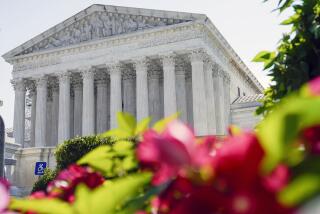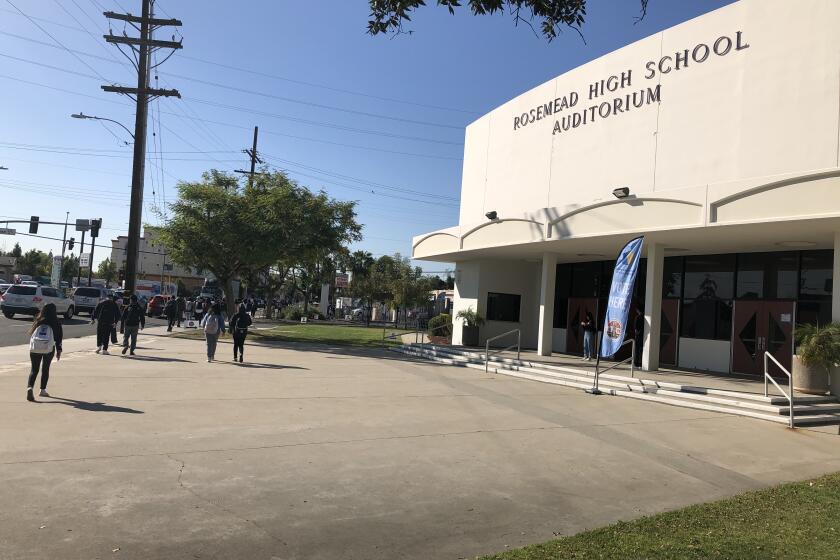State’s Surge in Student Loans Reflects U.S. Trend : Education: Borrowing to keep pace with soaring costs has risen 40% in California to $1.69 billion since last year, survey finds. Officials fear long-term economic effects.
Borrowing to pay for college is rising dramatically across the country, with more students assuming more debt than ever before, according to a preliminary report released Wednesday by the American Council on Education.
Based on a survey of more than 300 institutions of higher learning, the report found that from July, 1993, through June, 1994, the nation’s students and parents borrowed 41% more than during the previous 12-month period. Borrowing in California mirrored that trend, rising 40% over the same period to $1.69 billion.
“To our knowledge, this is the biggest jump that we’ve seen in history,” said David Merkowitz, a spokesman for the American Council on Education, who lamented “a breaking of the traditional bargain in higher education: that the current generation will help pay for the education of the next generation.”
“It’s a major structural change in the way we pay for college in the United States,” said Patrick Callan, executive director of the California Higher Education Policy Center. He called the report’s findings “cause for significant concern.”
Although the report could not determine the average debt level per student, analysts speculated that it, too, is rising sharply. They warned that once today’s students graduate and begin trying to repay their loans, indebtedness will force them to make choices they might not otherwise make.
“What kinds of decisions will these people make about graduate school if they already have huge debts? Will they (feel free to) choose low-paying professions like teaching? Will they be able to buy houses or cars? What will be the effect on the economy?” asked Merkowitz, who said growing student debt has “very severe implications for the future of this country.”
In recent years, loans have become increasingly important to students because other forms of financial aid have not kept pace with soaring college costs. In addition, the federal government last year made it easier to borrow money by relaxing eligibility requirements while raising the amount students could borrow each year. The result: a national borrowing boom.
“Of the 75 million loans made since the original guaranteed student loan program started in 1966, 16% were made in the last two years,” said Fred Galloway, the American Council on Education’s director of federal policy analysis. “Furthermore, of the $183 billion borrowed in the nearly 30-year history of the program, 22% was borrowed in the last two years.”
California is experiencing a record borrowing surge as well. During the 12 months ending in June, 1994, borrowing increased 65% among California State University students--the first time that Cal State had outpaced the University of California in loan volume. Students attending the UC system borrowed 54% more than they had the previous academic year, while the number of loans increased 36% at community colleges. Borrowing by students at private colleges and universities in California rose 47%.
Overall, California’s students and their parents borrowed $1.69 billion through federal loan programs during the 1993-94 academic year--a huge increase from the previous 12 months, when total borrowing was $1.2 billion.
“That’s a phenomenal figure,” said Dana Callihan, a spokesman for the California Student Aid Commission. “Students in one year increased their level of borrowing by almost half a billion. That’s a big number.”
That number looks all the more staggering when compared to the recent past. According to Callihan, in the late 1970s California students were borrowing less than $100 million annually. If current patterns continue, borrowing by California students could surpass $2 billion by the end of this academic year in June, 1995.
More to Read
Start your day right
Sign up for Essential California for news, features and recommendations from the L.A. Times and beyond in your inbox six days a week.
You may occasionally receive promotional content from the Los Angeles Times.






